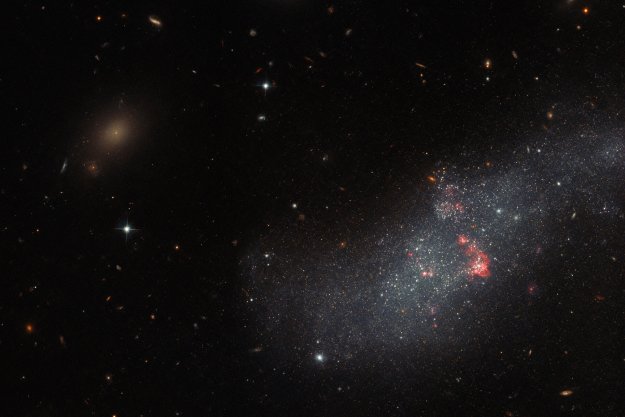Take some time out of your day to ooh and ahh at the beauty of the universe — Hubble has shared another stunning image of a nearby galaxy.
The Hubble Space Telescope has produced this gorgeous high resolution image of the Triangulum galaxy (M33), made up of 25 million viewable stars. Triangulum is one of the closer galaxies to Earth at approximately 3 million light-years distance, and is located in a region called the Local Group. Triangulum is one of the three biggest galaxies in the group, along with Andromeda and our Milky Way. It is thought that Triangulum might be a satellite of Andromeda because of the way that the two galaxies move around each other and because they are so close together.

In the Hubble’s image of Triangulum you can see the full spiral face of the galaxy, composed of a stitching together of 54 images captured by the telescope’s full field of view and totaling an area of more than 19,000 light-years across. Part of the reason that the image is so striking is that Triangulum forms stars at a very fast rate, with star formation occurring ten times faster than in the nearby Andromeda galaxy. This vigorous star formation creates lots of light and clouds of gases which are illuminated in the image.
Another unusual feature of Triangulum is that it has an unusually orderly spiral, with dust distributed evenly throughout the spiral arms which makes it easy to see the galaxy’s shape. Astronomers believe that the galaxy has evolved this way because it has had minimal interactions with other galaxies, meaning that it could continue producing stars without interference and could retain an organized spiral pattern. Researchers hope that this image can help us learn more about how galaxies develop over time.
You can find high resolution versions of the Triangulum image to pore over in detail on the Hubble website. And the video below shows a zoom in on the Triangulum galaxy, in a three million light-year trip that hones in on the most detailed image of the galaxy ever captured, showing the glowing gas clouds and the spiral arms of the galaxy in stunning detail:
Editors' Recommendations
- Hubble images a pair of galaxies caught in the process of merging
- Scientists investigate star formation in the famous Whirlpool Galaxy
- Hubble images our ghostly neighborhood galaxy NGC 6684
- Hubble image shows a lonely star glowing over an irregular background galaxy
- One galaxy, two views: see a comparison of images from Hubble and Webb




